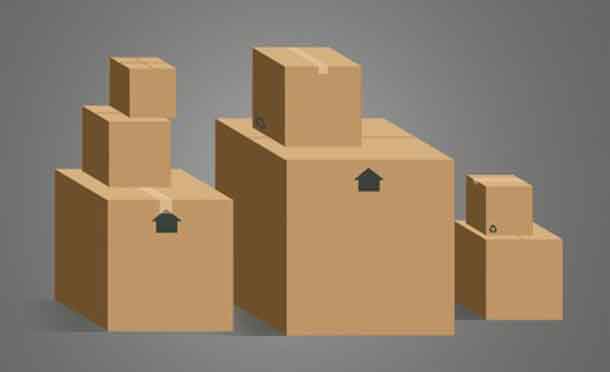Key Takeaways
- Preparation and understanding the unique aspects of long-distance moving are crucial.
- Decluttering is a liberating step that can also lower moving costs.
- Employing strategic packing and labeling eases the move and the following adjustment period.
- Creating a moving day kit can alleviate stress on the actual day of the move.
Table of Contents
- Understanding Long-Distance Moving Challenges
- Strategic Planning: The Key to a Smooth Transition
- Decluttering and Organizing Before the Move
- Packing Smarter, Not Harder
- Staying Organized on Moving Day
- Navigating the Journey: Ensuring Safety and Sanity
- Arriving at Your New Home: The First Steps
Understanding Long-Distance Moving Challenges
The venture of a long-distance move commands physical coordination of belongings and managing logistics, time, and emotions. Its complexity is echoed in each logistical decision and the packed box’s emotional weight. Seeking the expertise of professional long distance movers can turn this taxing task into a manageable affair. With these essential moving tips, you’re equipping yourself with the knowledge to navigate the move gracefully and efficiently. A long-distance move presents unique challenges, including navigating international regulations and managing transport logistics. Proactively understanding these challenges mitigates potential damages and delays. Cost, influenced by distance and services required, is often underestimated, necessitating quotes from multiple companies to avoid hidden fees, while flexibility in timing can secure better rates. Developing a clear plan with timelines and budgeting provides a structured approach and a sense of control amid the relocation chaos.
Strategic Planning: The Key to a Smooth Transition
The heart of any successful move is a strategic plan. Creating a comprehensive moving checklist includes:
- Outlining tasks such as hiring movers.
- Changing addresses.
- Arranging utilities at the new home.
A comprehensive master list sets the stage for a well-organized move, covering pre-move preparations and post-move tasks. Strategic budgeting includes expenses for packing supplies and potential accommodations during the relocation. Selecting the best long distance moving company is crucial; prioritize those with accreditation, positive reviews, and extensive experience in long-distance moves. Investing time and resources in choosing the right movers ensures the safe transport of cherished belongings and peace of mind. Opting for specialized long-distance movers streamlines the process, as they anticipate needs and handle challenges efficiently, ultimately saving you time and alleviating stress.
Decluttering and Organizing Before the Move
Decluttering before a move is not only practical but also emotionally liberating. To declutter effectively, categorize belongings and decide what to keep, sell, donate, or recycle. Starting early and focusing on cluttered areas gradually can ease the process. Decluttering isn’t just about minimizing belongings and making space for new experiences in your new home. It symbolizes closing one chapter and beginning another. Reducing the number of items to pack will save time and money during the moving process. This proactive approach sets the stage for a smoother transition and a fresh start in your new space.
Packing Smarter, Not Harder
The key to a successful move and efficient setup in your new home begins with a systematic packing approach. Start by creating a detailed inventory and selecting appropriate packing materials for each category of items. Consider the weight and fragility of belongings when choosing box sizes and protective materials. Packing room-by-room enables you to prioritize essentials and streamline the process. Labeling boxes with contents, naming rooms, and numbering them for inventory tracking enhance organization. This meticulous packing process pays off upon arrival, facilitating a smoother transition and making unpacking more manageable, allowing you to access essentials and reduce chaos quickly.
Staying Organized on Moving Day
On a moving day, efficient packing and clear labeling streamline the transition process. Communication with the moving team is essential; guide them around your home and highlight items needing special care. Maintaining a positive and collaborative attitude fosters a smoother moving day and resolves unexpected issues more effectively. A moving day kit containing essentials like toiletries, clothing, medication, and documents ensures immediate access to necessities in your new home. Preparing to leave your old home and ready for your first night in the new one helps manage stress during a long and exhausting day.
Navigating the Journey: Ensuring Safety and Sanity
As relocation day approaches, prioritize safety and peace of mind by confirming all travel arrangements in advance, including flights and accommodations if necessary. For road trips, ensure your vehicle is serviced and plan your route meticulously, considering breaks for rest and enjoyment. Remember to account for the needs of pets or children accompanying you. While the moving company handles your belongings, keep personal items like important documents and valuables close for security and accessibility. Maintaining a calm and adaptable attitude during travel helps navigate unexpected delays or changes smoothly. Embrace the physical and emotional journey as a positive step towards a new chapter in your life, using travel time for reflection and relaxation.
Arriving at Your New Home: The First Steps
Upon arrival at your new home, take a moment to appreciate the milestone achieved. Before unloading boxes, conduct a preliminary inspection to ensure no overlooked issues and utilities are operational. Prioritize setting up critical areas like the kitchen, bathroom, and bedroom for immediate comfort amid the chaos. Even if unpacking isn’t completed in a day, having these areas functional maintains essential routines. Use the early days to explore the neighborhood, discover amenities, and introduce yourself to neighbors, fostering a sense of belonging in your new environment.








